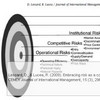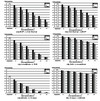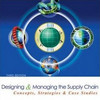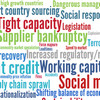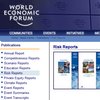 This blog is about supply chain risk, business continuity and transport vulnerability, and while I have blogged profusely about supply chain resilience in a vast number of posts over the last 3 1/2 years, citing journal articles, book, papers and research reports en masse, one major reference – perhaps the major reference – has so far been omitted: Creating Resilient Supply Chains: A Practical Guide, published by the University of Cranfield in 2003. Commissioned by the UK Department of Transport, with Helen Peck as the principal researcher, the objective of the report is to increase awareness, understanding and thus the ability of UK industry to cope with disruptions to its supply chains. To that end it provides insight and practical tools, which will assist managers in improving the resilience of their organisation’s supply chain networks.
This blog is about supply chain risk, business continuity and transport vulnerability, and while I have blogged profusely about supply chain resilience in a vast number of posts over the last 3 1/2 years, citing journal articles, book, papers and research reports en masse, one major reference – perhaps the major reference – has so far been omitted: Creating Resilient Supply Chains: A Practical Guide, published by the University of Cranfield in 2003. Commissioned by the UK Department of Transport, with Helen Peck as the principal researcher, the objective of the report is to increase awareness, understanding and thus the ability of UK industry to cope with disruptions to its supply chains. To that end it provides insight and practical tools, which will assist managers in improving the resilience of their organisation’s supply chain networks.
“Supply Chain Vulnerability” revisited
Much of the report stems from an earlier report prepared at Cranfield, namely Supply Chain Vulnerability, but this report goes much further in identifying the opportunities for the creation of more resilient supply chains. And more importantly, it is freely available online (link may be slow). While the original Supply Chain Vulnerability report unfortunately is not available for download, at least not for the time being, the self assessment workbook for understanding supply chain risk, which is based on said report, has been made available online (link may be slow). Here are some of the highlights from the report:
1 Introduction – understanding supply chain risk
The introduction dives straight into the hallmark of Helen Peck’s work, the four interlocking levels that can be found in any supply chain:
- Level 1 – Process/Value Stream
- Level 2 – Assets and Infrastructure Dependencies
- Level 3 – Organisations and Inter-organisational Networks
- Level 4 – The Environment
Published in her 2003 article, Drivers of supply chain vulnerability, this framework has been picked up by many researchers since then, e.g. in yesterday’s conference paper on supply chain resilience. When I first came across it, I must admit that I had some trouble grasping the idea behind these four levels, but the more I study supply chain risk, the more fond I have become of this model.
2 Case study
Chapter 2 is a case study based on companies engaged in the manufacture of high-performance military aircraft. the reason for choosing this particular industry is because it operates in an extreme risk environment, characterised by high levels of commercial, technological and political risk, as well as inherent product safety issues, thus providing the almost perfect breeding ground for all sorts of deliberations on risk, vulnerability and resilience. The case study investigates how supply chain management tools and techniques are used in relation to supply chain risk and how they can be linked to risk management.
3 Managing Supply Chain Risk – Industry Comparisons
In this chapter, the conclusions of the base case study are validated through cross-sector comparisons and discussions with managers from leading organisations representing the following “critical sectors”:
- Food & drink (manufacturing & retailing)
- Electrical/electronics (manufacturing)
- Oil/petrochemicals (extraction & refining)
- Healthcare/pharmaceuticals (manufacturing, private sector; distribution, public sector)
- Automotive spares/construction (manufacturer and distributor)
- Logistics/transport (private & public sector)
- Packaging (manufacturer)
While they remain unnamed, the companies selected are described as “household names, significant players in the UK with international interests and supply chains that span the world. Their core businesses cover at least one of the critical sectors, but some have interests in others.” What I found very interesting in the report was reading how each company viewed their own state of being at risk or not.
Cost reduction remained a constant theme, emerging as the principle driver behind the universal moves towards longer, leaner, more consolidated, but potentially less resilient networks.
When and where supply chains (as the managers interviewed understood the term) were most vulnerable were usually known, but not always recognised elsewhere in the organisation or supply chain
Few managers believed that their internal networks or those of the wider industry were stable enough to reach a mature balanced state.
The management of change coupled with regulatory and geopolitical changes and the practicalities of managing across different legal, cultural and environmental settings made supply chain management a far more complex set of activities than was perhaps widely recognised
The managers interviewed found the identification of suitable risk management tools initially problematic. Nevertheless, they supported the general principle of a limited reach approach to supply chain risk management, encompassing the focal firm, its immediate customers and suppliers, where possible within a shared data environment.
Considering that these are major and thus resourceful firms, it seems clear that supply chain mangers are aware of risk, but uncertain as to whether they will be able to cope with the situations and problems that may arise.
4 Creating the Resilient Supply Chain: Recommendations for business
Building on the two previous chapters, the last chapter contains the key points which impact supply chain resilience and business continuity, two of which are:
There is a disconnect in organisations between the determination of business strategy and the recognition of the impact of these strategic decisions upon supply chain vulnerability.
Business continuity and risk management, particularly with regard to IT appears to be fairly well understood and applied in most companies. The same is not true of risk management in supply chains.
The report goes on to say that “dealing with supply chain vulnerability requires a change management approach. Such an approach recognises that the ‘right’ philosophy for tackling supply chain vulnerability depends on culture, structure and business drivers dominant in an industry sector.” Every company must find out for themselves how to
- Understand their supply chain risk
- Re-engineer the supply chain
- Engage in supply chain collaboration
- Ensure supply chain agility
- Nurture a supply chain risk management culture
So basically, there cannot be a “one size fits all” solution when it comes to supply chain risk, vulnerability and resilience. I think that is a major point.
Appendix galore
Notably, the above is only half the report. The remaining 50 or so pages contain appendix after appendix, toolkits, examples, step-by-step guides, a glossary and more. In particular, there is a risk management approach for Small and Medium Enterprises (SMEs).
Conclusion
Why haven’t I mentioned this report before? An accidental oversight perhaps, because this report is so obvious that anyone should be able to find it without me guiding them. Since its publication this report has sparked much of the current research in supply chain resilience, and in my opinion it ought to become the standard reference for risk, vulnerability and resilience in supply chains, and it ought to belong in every literature review on those subjects.
Reference
Creating Resilient Supply Chains: A Practical Guide. Centre for Logistics and Supply Chain Management at the Cranfield School of Management
Read online/download
- cranfield.ac.uk: Creating resilient supply chains (link may be slow)
Related posts
- husdal.com: Is your supply chain vulnerable?
- husdal.com: Drivers of supply chain vulnerability

